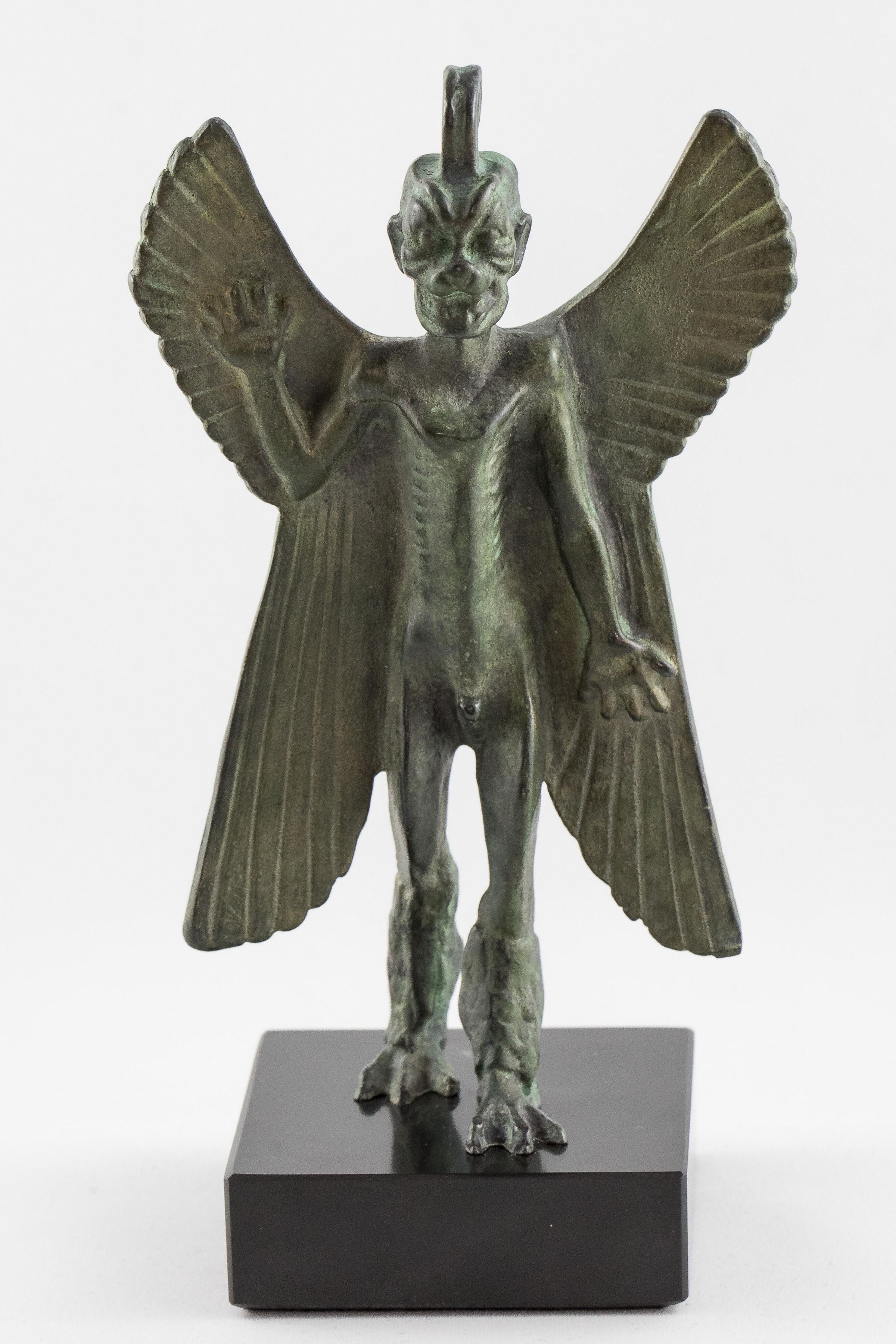Demon Pazuzu
Name/Title
Demon PazuzuEntry/Object ID
06NE11106Description
Demon with a double set of wings, head of a dragon/snake, body of a man with one upraised arm, scorpion's tail and talons with its left leg stepping forward.Type of Sculpture
StatuetteArtwork Details
Medium
ResinContext
Pazuzu was well-known in Assyrian art and culture as the king of demons who controlled the winds, such as the South-West wind that brought that brought droughts, famine and locusts. While sinister in appearance and character, he could be invoked for benevolent purposes. Widely represented in statuettes and amulets, perhaps Pazuzu's most important duty was protecting the sick and weak from his evil demoness wife Lamashtu. His stance here is symbolic: his right hand is raised and his left hand is extended downwards. This position represents life/death and creation/destruction. The ring atop his head suggests that the piece was intended to be hung, perhaps in the room of someone in need of protectionMade/Created
Date made
911 BCE - 604 BCETime Period
Iron AgeEthnography
Culture/Tribe
Near Eastern - Assyrian

